Exchange Server crash is a common concern for all administrators which can happen due to logical and system errors. In case of eventualities, they wish to fix the problem as early as possible. The Exchange Server crash relates to sudden server shutdown or server down for a long time and for its recovery and maintenance, administrators have native recovery methods based on the availability of the database backup. Here, we will discuss some recovery options available for them.
Exchange recovery options – Soft Recovery & Hard Recovery
Exchange provides two recovery options for administrators– Eseutil Soft Recovery and Eseutil Hard Recovery. First, let us have a general introduction to the two recovery options:
- Soft Recovery: In this, transaction log files are replayed when the database is mounted again after an abrupt Exchange stoppage, or they are replayed against an offline copy of the database.
- Hard Recovery: In this, transaction logs are replayed once the database is restored from online backup.
Note: For both types of recovery, database backup should be available online, and the log file must not be in a corrupt state.
How to perform Soft Recovery?
To run Soft Recovery, mount any database in the storage group as all databases in a storage group share the same stream of log files.
The syntax to be used for Eseutil.exe soft recovery is given below:
| ESEUTIL /r enn /L [path to log files] /s [path to checkpoint file] /d [path to database file] /i |
Note: It is not possible:
- To replay log files to a different database.
- To replay log files if any database file has been removed from the storage group.
- To replay log files if checkpoint file points to the wrong log.
- To replay log files if you don’t have all log files available.
- To replay log files if database files have been moved to a different file path location.
How to perform Hard Recovery?
To perform Hard Recovery, you must have restored the database from online backup. The syntax to be used for Eseutil.exe hared recovery is given below:
| ESEUTIL /cc [path to the restore.env folder] |
Note: The Restore.env file should be present in the folder for hard recovery.
EDB recovery using professional tools
As Eseutil is difficult to run, it is advised to use a third-party professional software which performs a full recovery of data from lost or corrupted files. Exchange Server Recovery software proficiently recovers EDB data, whether corrupted, lost or deleted, and saves it to the specified location. Also, there are no chances of any error in the recovery. Other than recovery, the EDB to PST tool migrates EDB to different destinations including Exchange Server and Office 365.
To get back Exchange data after a server crash, administrators can resort to Soft Recovery and Hard Recovery. But if they are looking for a simpler way, they can try a professional Exchange Server Recovery tool. It performs quick and smooth Exchange data recovery. It has many destination options for the recovered Exchange data. Let us look at the steps needed for offline EDB file recovery. First, download and install the tool on your system.
- Run the Exchange Server tool and choose the Offline EDB option. It is selected as the default option. Click Next to continue.
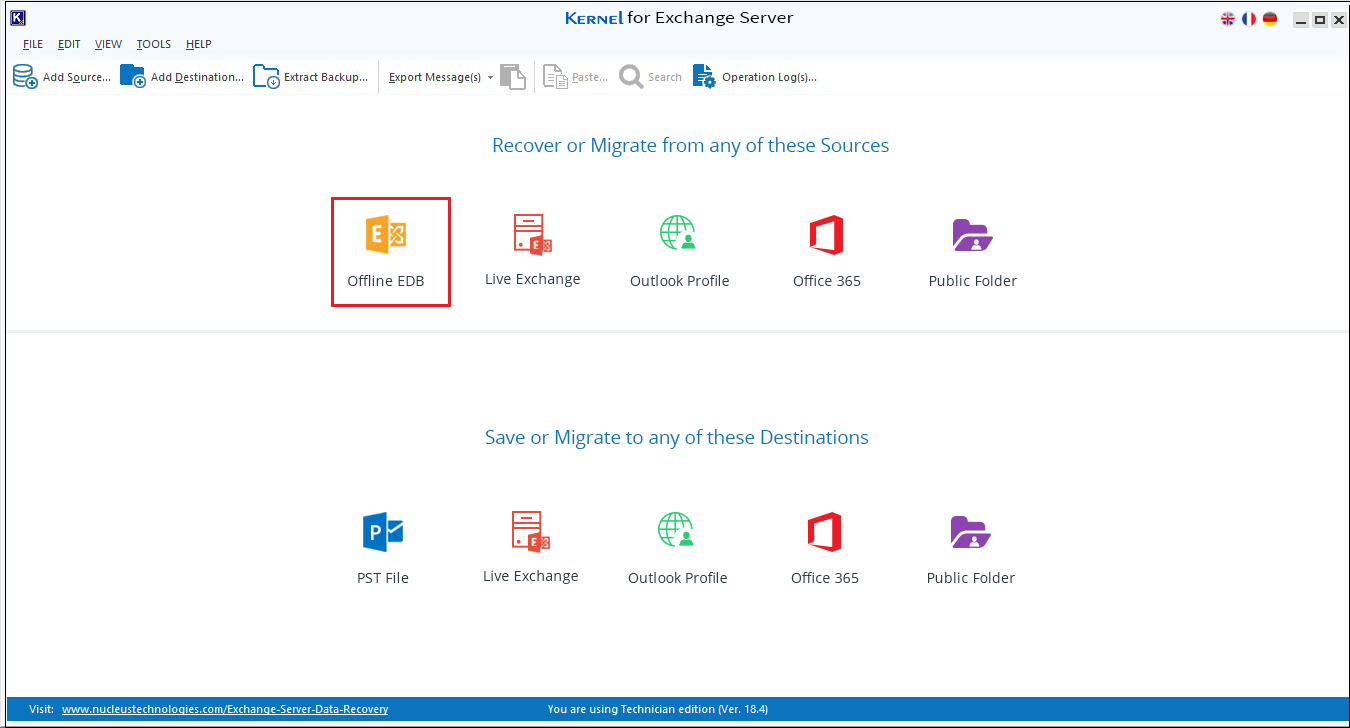
- Now, browse and add the offline EDB from the system and click Next.
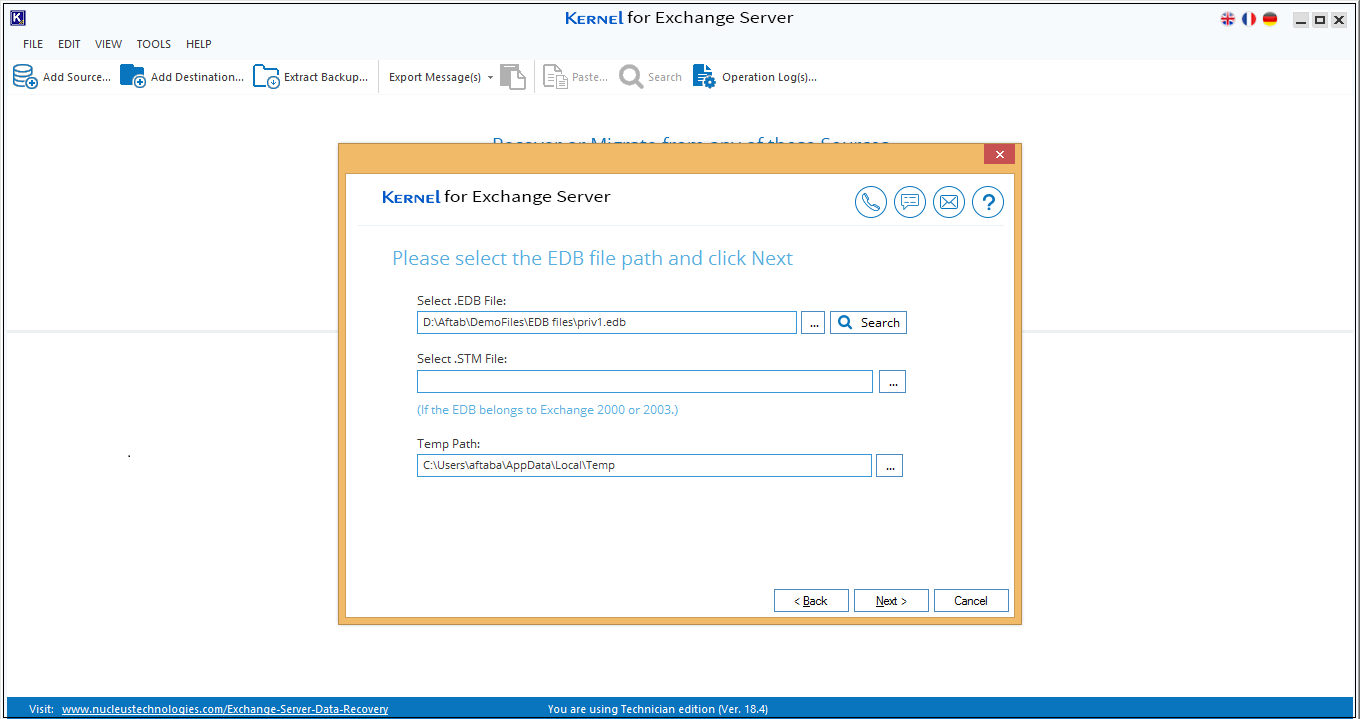
- Choose the scanning mode for recovery and click Next. The scanning process will get started.
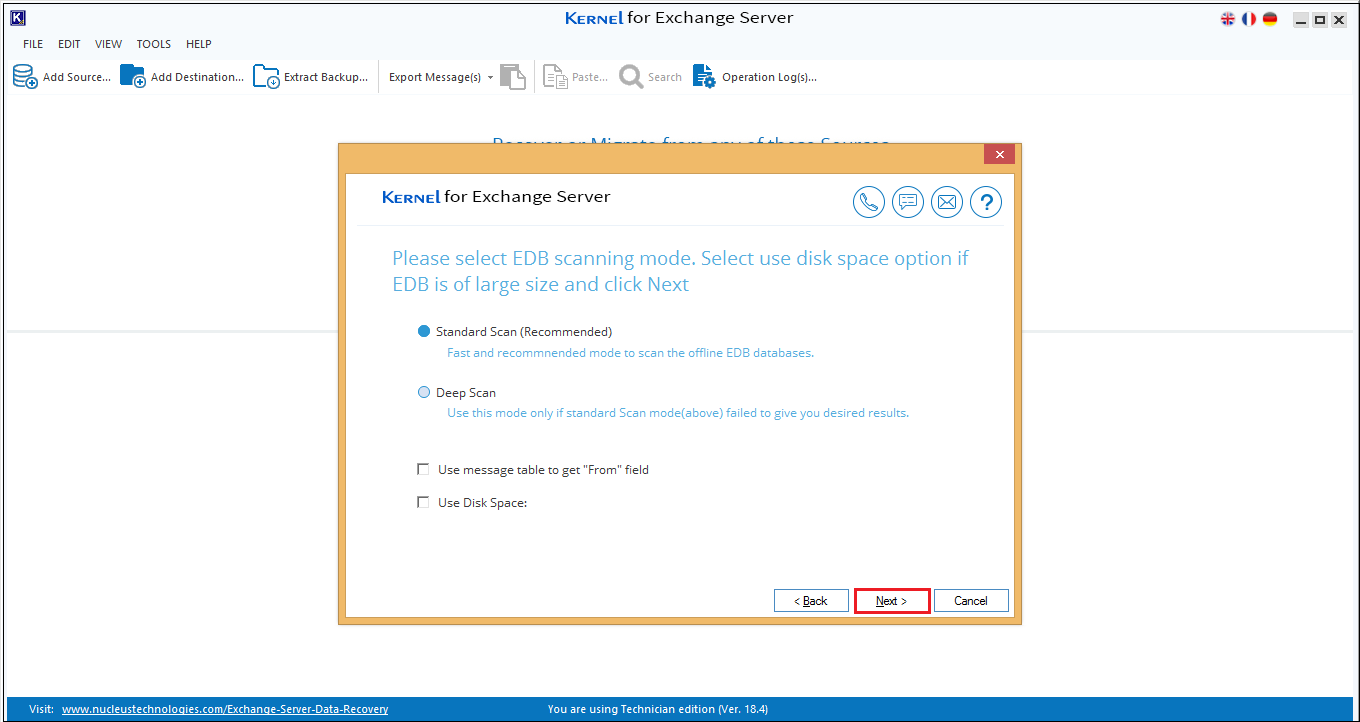
- After the completion of the scan, it displays a message for confirmation. Click Finish to continue. All the EDB data will get recovered in the same hierarchy. With the Preview feature, you can view any mailbox item. Now, to add the destination as a PST file, click the respective icon.
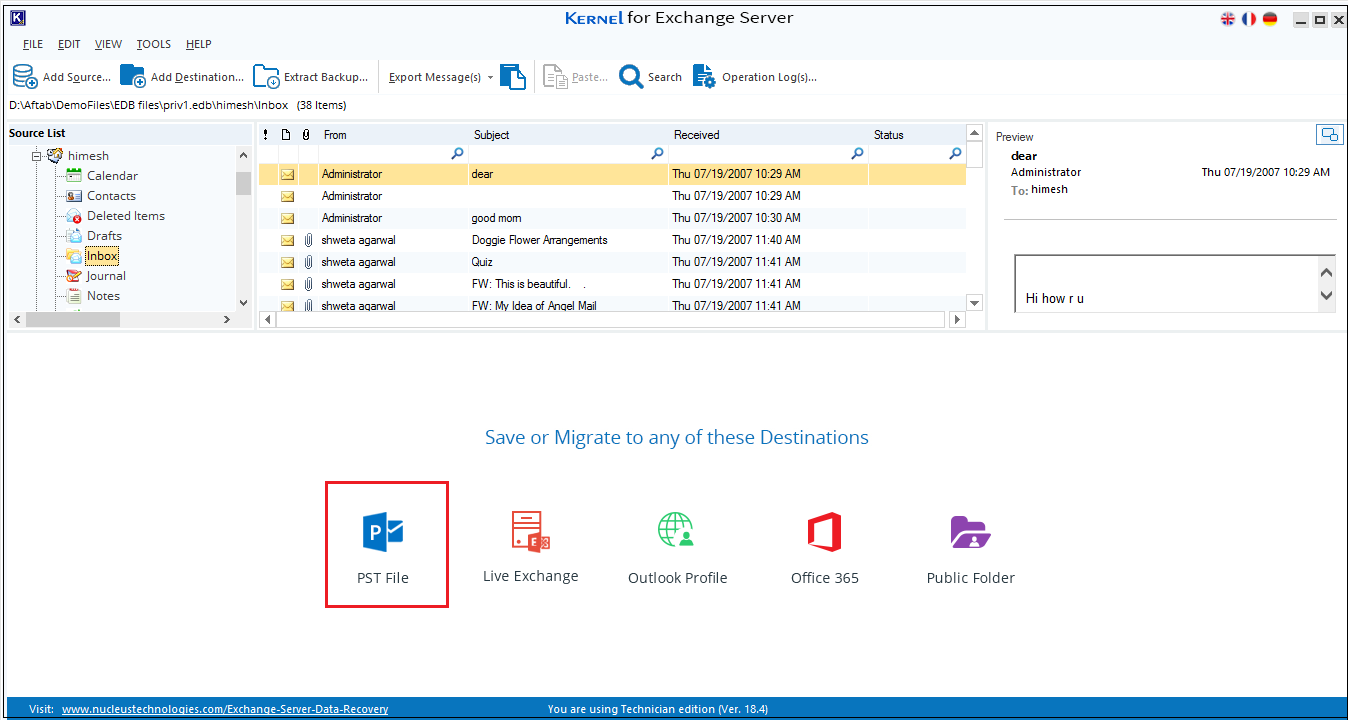
- You have options to create a new PST file or move data to the existing one. Select the required option and click Next.
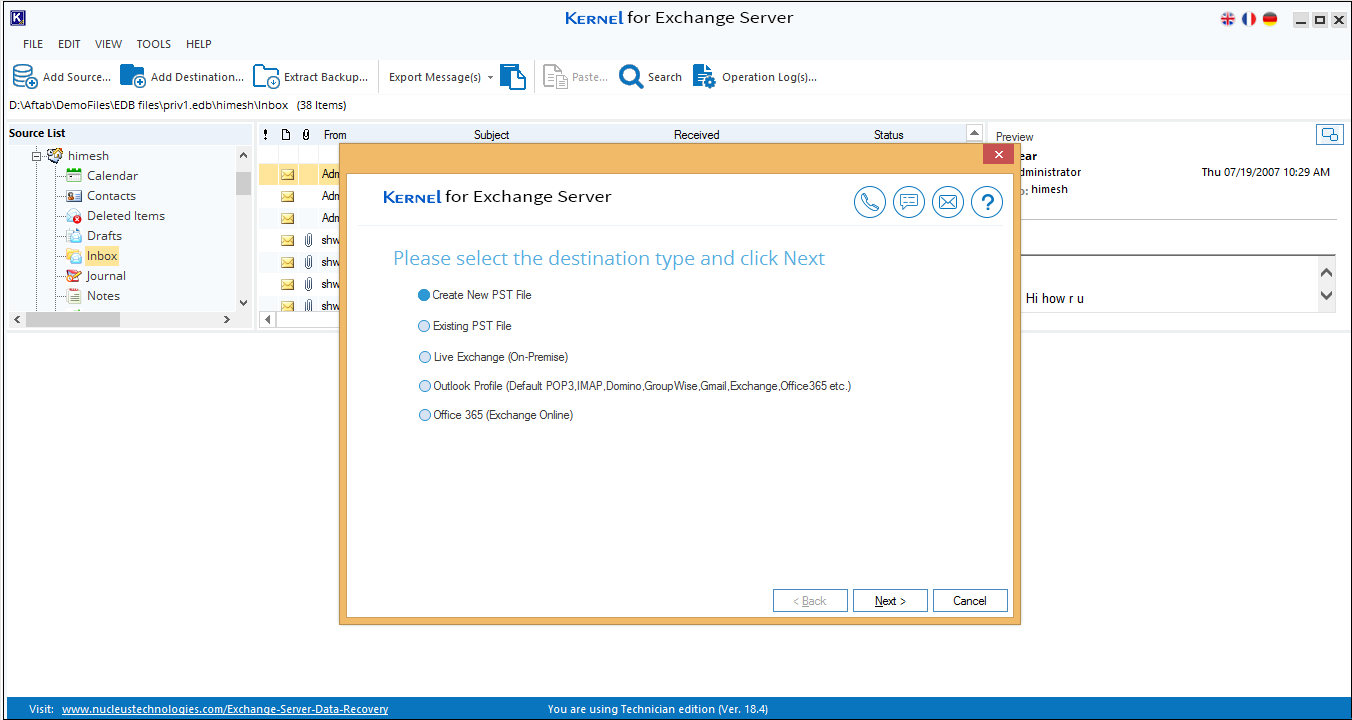
- If you have chosen the first option, then provide the name, saving path, password (optional) for the new PST file and click Next.
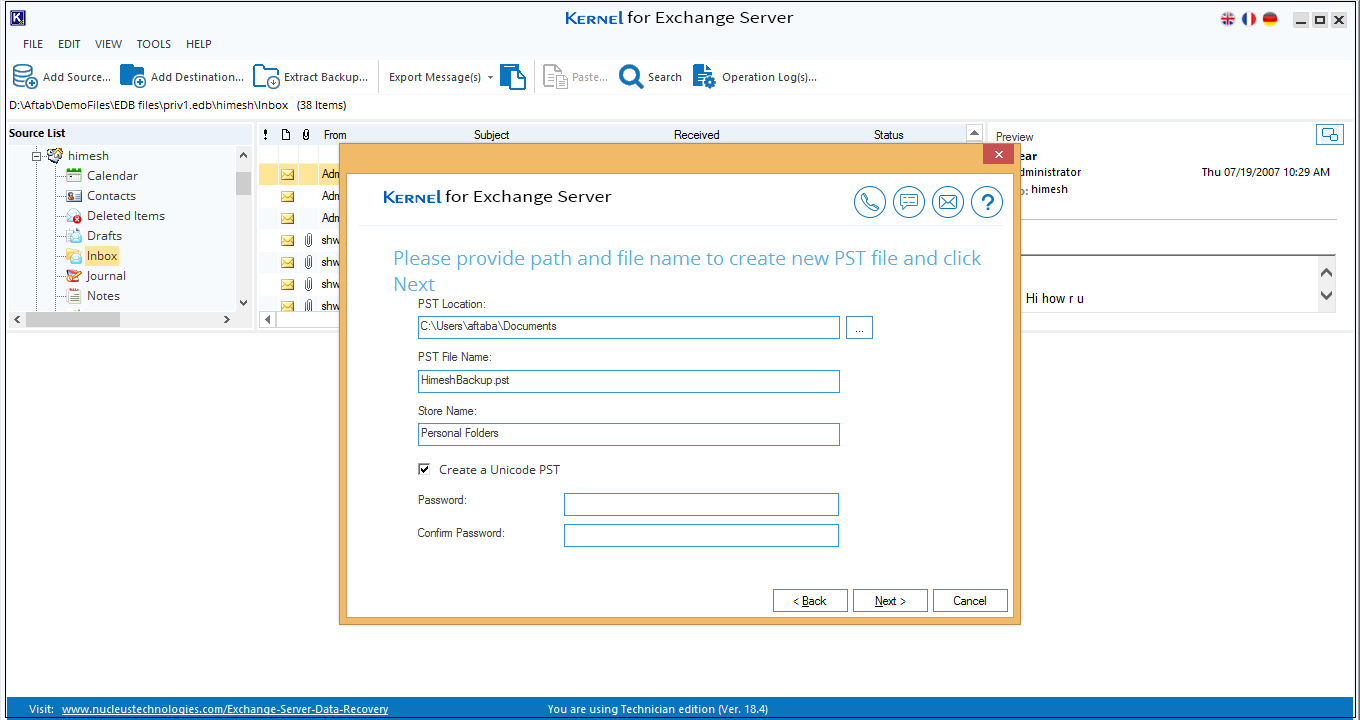
- The PST file will get added to the destination pane. You can simply drag-drop or copy-paste email folders. You will get a live report for any export you perform.
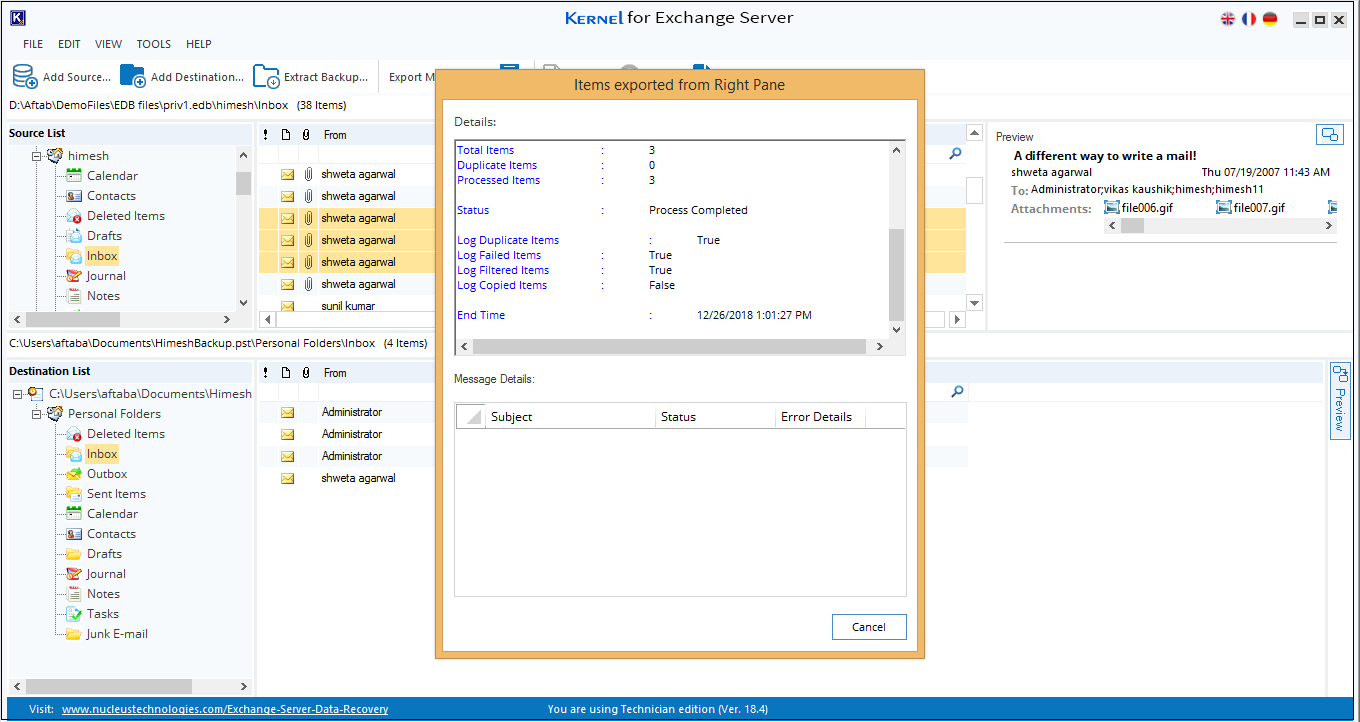
- You can see the emails exported from the source in the destination pane.
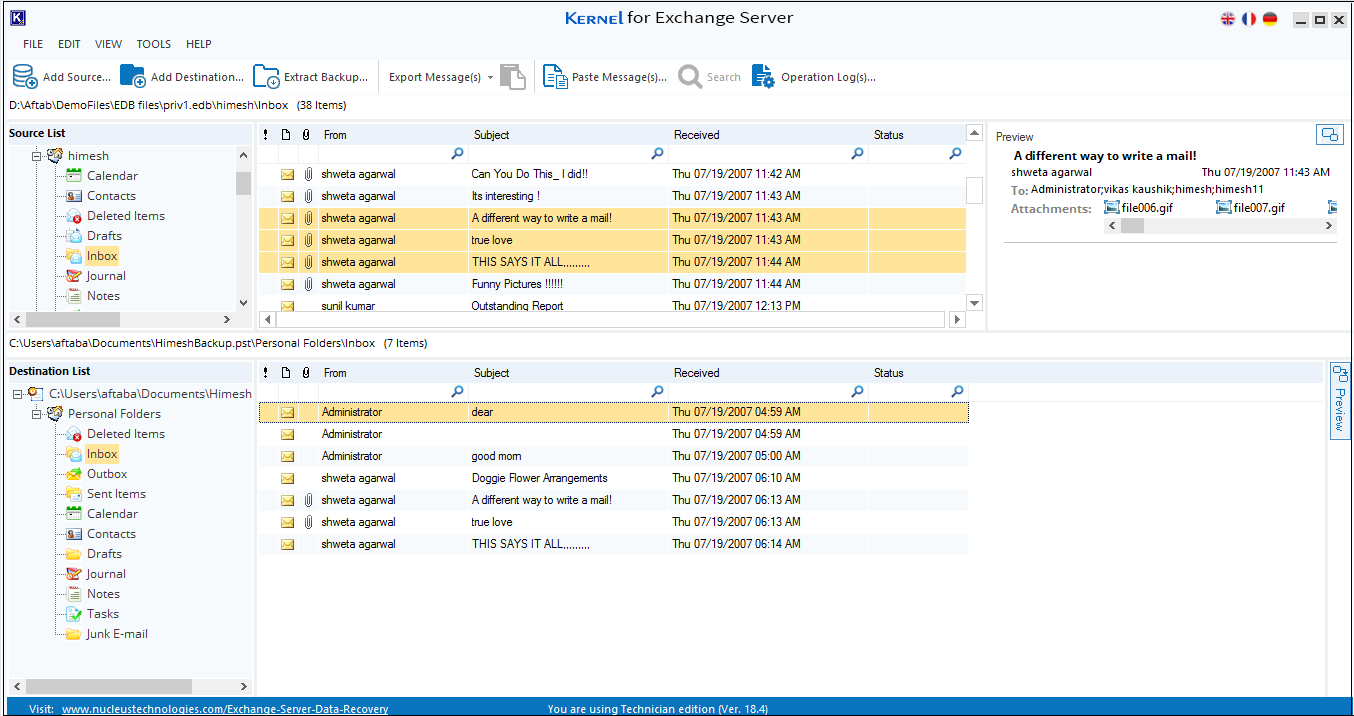
With a very simple GUI and direct steps, we have just recovered data from the offline EDB file and moved it to a PST file at the desired location.
Summary
Manual processes for Exchange recovery such as Soft and Hard recovery via the ESEUTIL application needs technical expertise, database backup, and ample time for success. So, a simple yet efficient Exchange Recovery tool for exquisite recovery from the corrupt EDB file is the best choice for save Exchange data recovery. It delivers speedy and automated database recovery with the choice of data saving to the desired destination platform.

